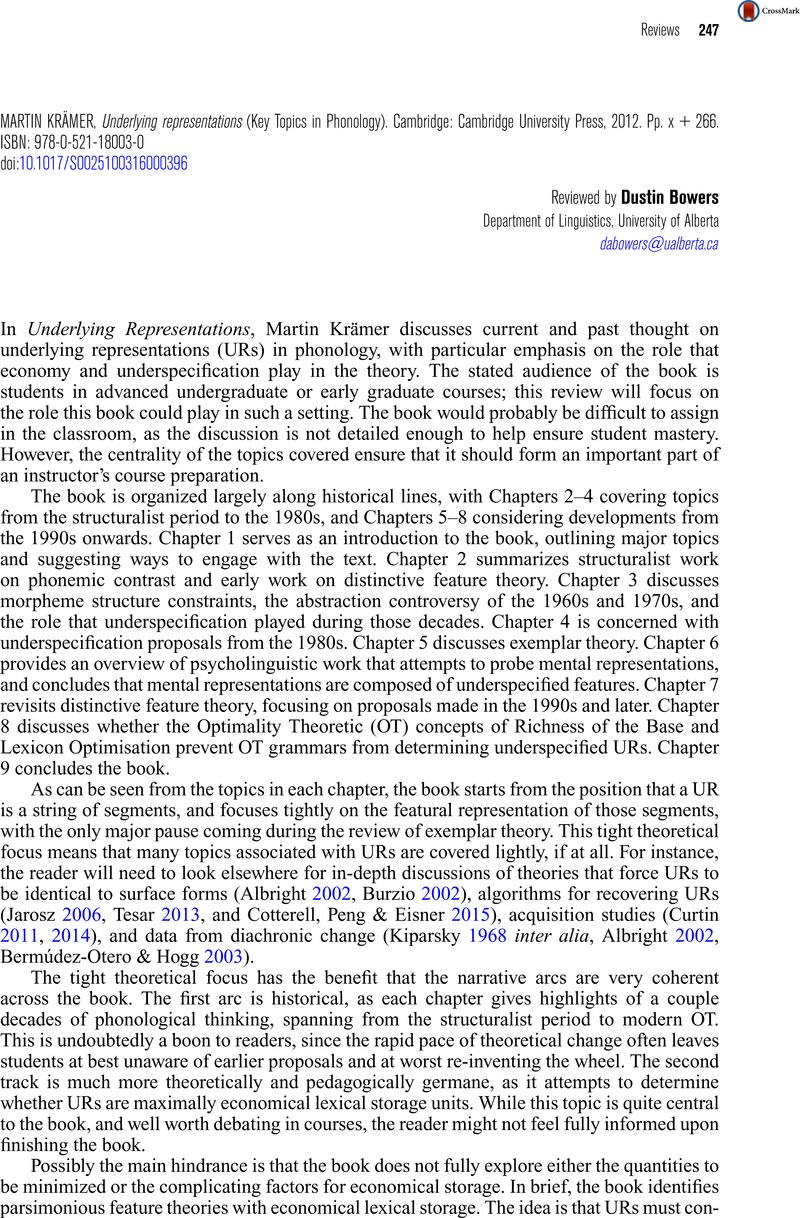No CrossRef data available.
Article contents
MARTIN KRÄMER , Underlying representations (Key Topics in Phonology). Cambridge: Cambridge University Press, 2012. Pp. x + 266. ISBN: 978-0-521-18003-0
Published online by Cambridge University Press: 12 December 2016
Abstract
An abstract is not available for this content so a preview has been provided. Please use the Get access link above for information on how to access this content.

- Type
- Book Review
- Information
- Journal of the International Phonetic Association , Volume 47 , Issue 2 , August 2017 , pp. 247 - 249
- Copyright
- Copyright © International Phonetic Association 2016
References
Albright, Adam. 2002. The identification of bases in morphological paradigms. Ph.D. dissertation, University of California, Los Angeles.Google Scholar
Bermúdez-Otero, Ricardo & Hogg, Richard M.. 2003. The actuation problem in Optimality Theory: Phonologization, rule inversion and rule loss. In Eric Holt, D. (ed.), Optimality Theory and language change, 91–119. Dordrecht: Kluwer.Google Scholar
Burzio, Luigi. 2002. Surface-to-surface morphology: When your representations turn into constraints. In Boucher, Paul (ed.), Many morphologies, 142–177. Somerville, MA: Cascadilla Press.Google Scholar
Chomsky, Noam & Halle, Morris. 1968. The sound pattern of English. New York: Harper and Row.Google Scholar
Cotterell, Ryan, Peng, Nanyun & Eisner, Jason. 2015. Modeling word forms using latent underlying morphs and phonology. Transactions of the Association for Computational Linguistics
3, 433–447.Google Scholar
Curtin, Suzanne. 2011. Do newly formed word representations encode non-criterial information?
Journal of Child Language
38
(4), 904–917.CrossRefGoogle ScholarPubMed
Curtin, Suzanne. 2014. Now you hear it: 14-month-olds succeed at learning minimal pairs in stressed syllables. Journal of Cognition and Development
15
(1), 110–122.Google Scholar
Jakobson, Roman, Fant, Gunnar & Halle, Morris. 1952. Preliminaries to speech analysis. Cambridge, MA: MIT Press.Google Scholar
Jarosz, Gaja. 2006. Rich lexicons and restrictive grammars: Maximum likelihood learning in Optimality Theory. Ph.D. thesis, Johns Hopkins University.Google Scholar
Kiparsky, Paul. 1968. How abstract is phonology?
Bloomington, IN: Indiana University Linguistics Club.Google Scholar
Tesar, Bruce. 2013. Output-driven phonology: Theory and learning. Cambridge: Cambridge University Press.Google Scholar



